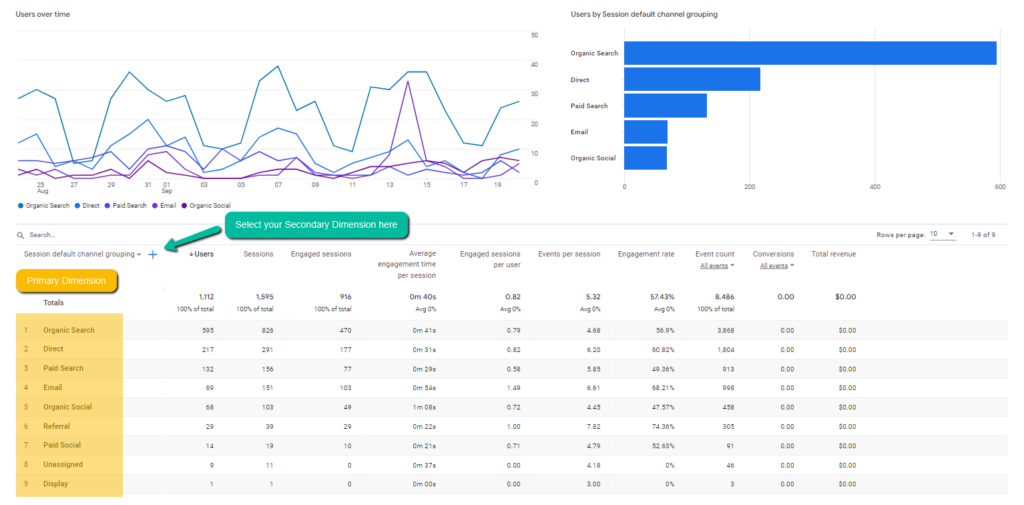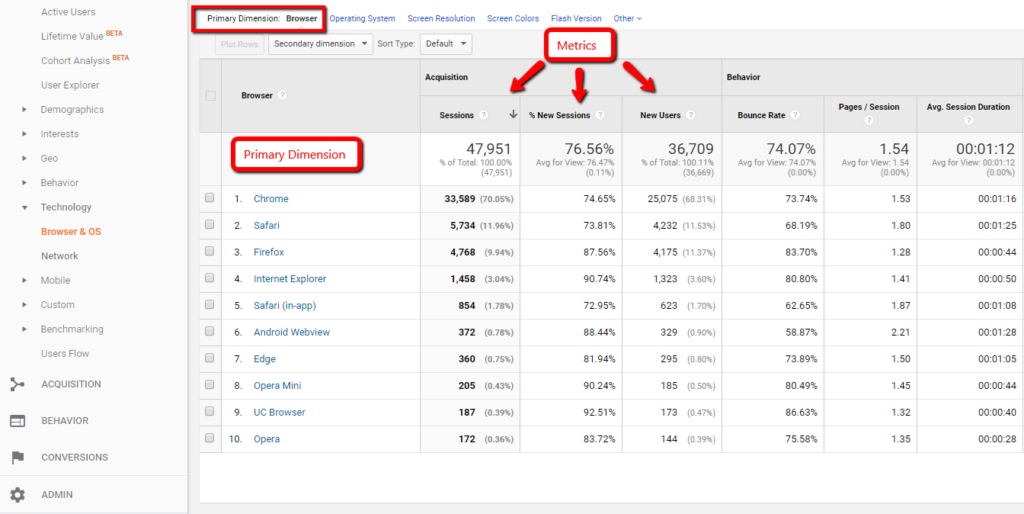The Importance of Secondary Dimension in Google Analytics for Your SEO
The Importance of Secondary Dimension in Google Analytics for Your SEO
Blog Article
Enhance Your Information Evaluation Using Secondary Dimension in Google Analytics
Checking out the abilities of additional measurements in Google Analytics opens up a realm of possibilities for refining information analysis. The ability to dissect details further past the surface area degree presents a nuanced sight that can shape critical choices. By layering added measurements onto main data sets, a more intricate narrative emerges, dropping light on user interactions and efficiency signs. This dynamic method to data evaluation holds the essential to opening concealed patterns and patterns that might change exactly how companies interpret their electronic footprint.
Comprehending Second Measurements
In the realm of information analysis, an essential aspect to grasp is the principle of additional dimensions and their relevance in drawing out deeper insights from Google Analytics reports. Secondary dimensions in Google Analytics describe extra parameters that can be included in the key dimension, permitting an extra comprehensive evaluation of information. By incorporating second dimensions, analysts can section and filter information to discover patterns, patterns, and correlations that might not be obvious when looking at the information in its entirety. These second measurements can give context and a much more comprehensive understanding of user habits, website traffic sources, and other crucial metrics tracked by Google Analytics.

Advantages of Making Use Of Secondary Measurements
When evaluating data in Google Analytics, the usage of secondary measurements provides very useful understandings into customer behavior and performance metrics. By including a secondary measurement to your key information, you can dig much deeper into the qualities of your website visitors and their communications. One of the key advantages of using additional dimensions is the capacity to section and contrast information more efficiently. This division enables you to comprehend how various variables, such as demographics or traffic resources, effect user habits and conversions (Secondary Dimension in Google Analytics).
Moreover, additional measurements assist in identifying patterns and connections that might not be quickly evident when looking at the information alone. This deeper level of analysis can uncover useful details that can guide advertising strategies, site optimization, and general business decisions. Furthermore, additional measurements boost the context of your primary data, providing a more detailed sight of customer involvement and performance metrics. Generally, making use of second measurements in Google Analytics can substantially enhance the depth and high quality of your data evaluation, leading to more informed decision-making and enhanced end results.
Exactly How to Include Additional Dimensions
By incorporating secondary measurements in Google Analytics, users can get deeper understandings into their data analysis process, allowing for even more comprehensive assessment of individual behavior and efficiency metrics. Including second measurements is a straightforward process that can substantially enhance the depth of evaluation. When in the report, find the "Additional dimension" tab over the information table.
Studying Information With Additional Dimensions
Utilizing secondary dimensions in information evaluation provides a more extensive understanding of customer behavior and performance metrics. By including a second measurement to your key information established in Google Analytics, you can dive much deeper into the attributes of your go to my site web site site visitors and their communications. Combining the primary dimension of 'source/medium' with the secondary measurement of 'touchdown page' can disclose which certain pages are drawing in traffic from various sources, assisting you enhance these pages for much better engagement.

Fundamentally, analyzing data with secondary measurements equips you to gain useful understandings into customer habits, identify trends, and make educated choices to improve the performance of your electronic residential or commercial properties.
Best Practices for Second Measurements
In information see this site analysis, including additional dimensions efficiently can considerably boost the depth of understandings stemmed from metrics and customer behavior patterns. When using secondary dimensions in Google Analytics or any other logical tool, it is essential to abide by best methods to guarantee the precision and significance of the data analysis.
One trick finest method is to thoroughly pick secondary measurements that enhance the key dimension being examined. Picking secondary dimensions that provide extra context or additional division can offer an extra extensive understanding of the information. It is additionally necessary to avoid overcomplicating the evaluation by consisting of also many second dimensions, which may cause complication or dilution of understandings.
Furthermore, it is a good idea to trying out various mixes of additional and main measurements to discover brand-new connections and trends. Frequently reviewing and refining the option of additional measurements based on the specific goals of the analysis can lead to even more actionable insights. By complying with these finest methods, information experts can take advantage of second measurements efficiently to boost the overall information analysis process and Related Site decision-making abilities.

Verdict
In conclusion, including secondary measurements in Google Analytics is essential for a detailed data analysis method. By leveraging additional dimensions alongside main ones, analysts and online marketers can reveal important insights and correlations that can inform decision-making and optimize digital marketing techniques. Understanding how to properly utilize second measurements and complying with finest methods will certainly enable experts to extract purposeful data and improve their general performance metrics.
Second measurements in Google Analytics refer to extra specifications that can be added to the key dimension, permitting for an extra in-depth analysis of data. By including secondary dimensions, experts can section and filter information to uncover patterns, trends, and relationships that may not be apparent when looking at the data as a whole. Combining the key dimension of 'source/medium' with the additional measurement of 'touchdown page' can disclose which details web pages are attracting web traffic from various resources, aiding you enhance these web pages for far better engagement.
One secret best technique is to thoroughly select additional dimensions that match the main measurement being examined. By adhering to these best practices, information analysts can leverage secondary measurements properly to improve the total information evaluation process and decision-making capabilities.
Report this page